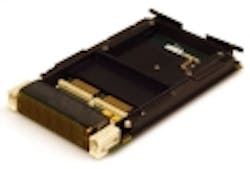DARPA pursues electronic warfare machine learning technology to automatically jam enemy adaptive communications
ARLINGTON, Va., 11 July 2010.Electronic warfare specialists at the U.S. Defense Advanced Research Projects Agency (DARPA) in Arlington, Va. are trying to push the bounds of machine learning to counter enemy threats from wireless adaptive communications such as battlefield radios, command and control networks, and RF triggers like cell phones used to detonate improvised explosive devices (IEDs). Adaptive communications automatically adjusts to conditions that degrade its performance, such as environmental conditions, or from intentional or inadvertent signals jamming.
DARPA issued a broad agency announcement (DARPA-BAA-10-79) Friday for the Behavioral Learning for Adaptive Electronic Warfare (BLADE) program to develop algorithms and techniques to enable U.S. electronic warfare systems to learn to jam new RF threats automatically in the field, instead of waiting for technicians in laboratories to characterize new communications threats and develop countermeasures.
The BLADE program will develop a networked electronic attack system that jams new wireless communications threats automatically by detecting and characterizing the new threat, learning to jam the new threat effectively and efficiently, and assessing the effectiveness of RF jamming in the field.
BLADE system should be able to operate as one node or as a network of distributed BLADE nodes, with performance improving as nodes are added to the network. Companies interested in participating should use existing networking capabilities to enable information sharing among several BLADE nodes.
DARPA will pursue the four-year BLADE program in three parts -- the first to the system and its algorithms, the second to design systems that operate in real time, and the third to build a networked prototype system. Agency officials expect to award several initial contracts for BLADE program research.
An industry day for DARPA to outline the BLADE program will be 28 July at the Capital Conference Center, 3601 Wilson Blvd., 6th floor, in Arlington, Va. Only industry representatives with DOD secret clearances will be able to attend the classified briefings. Register for the industry day online at https://www.schafertmd.com/conference/blade.
Companies interested in bidding for the BLADE program must respond no later than the BAA's final closing date on 8 Nov. 2010, but DARPA says companies have a better chance of being selected if they respond by the initial closing date of 8 Sept. 2010.
For technical questions or concerns contact the BLADE program manager at DARPA, Yiftach Eisenberg, by e-mail at [email protected], or by fax at 703-248-8072.
More information is online at https://www.fbo.gov/spg/ODA/DARPA/CMO/DARPA-BAA-10-79/listing.html.
Follow me on TwitterJoin the PennWell Aerospace and Defense Media Group on Linkedin at http://bit.ly/9MXl9
Become a fan of Military & Aerospace Electronics on Facebook at http://bit.ly/1VGM0Q
Post your aerospace and defense-related material to the #milaero community on Twitter. Use the #milaero hashtag.
Join your industry colleagues in the Command Post community online at http://community.milaero.com
